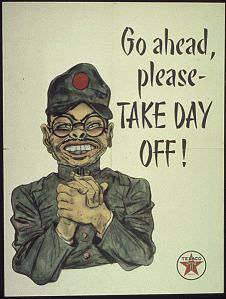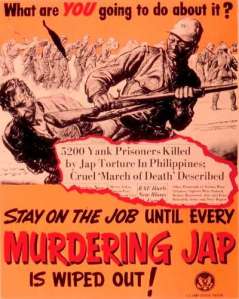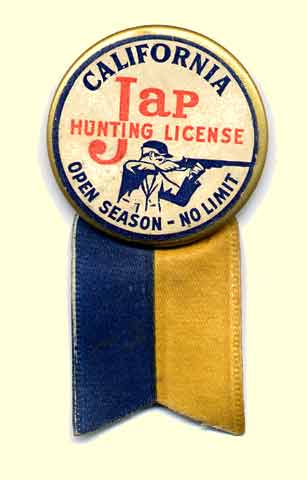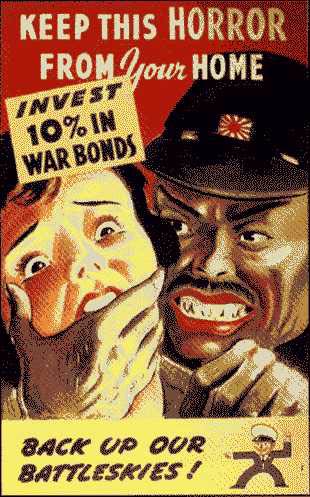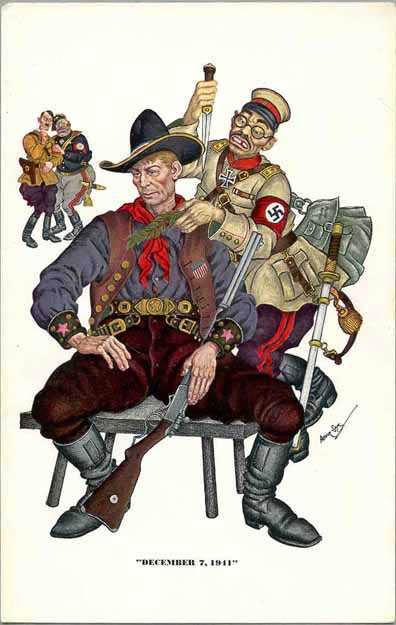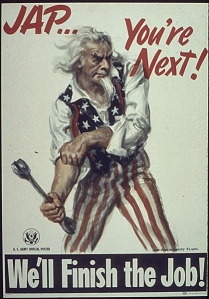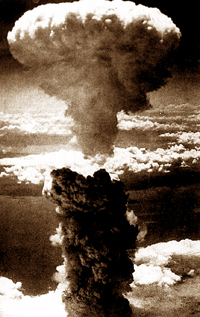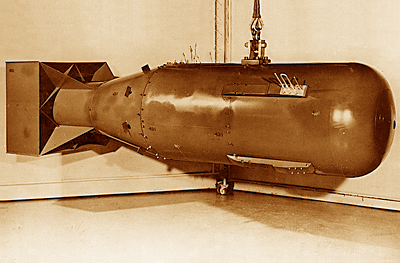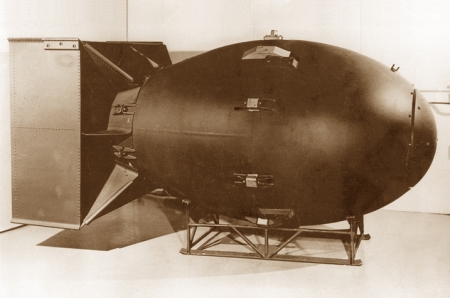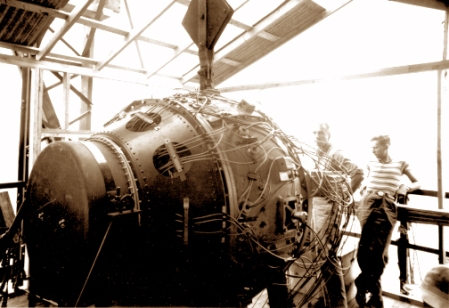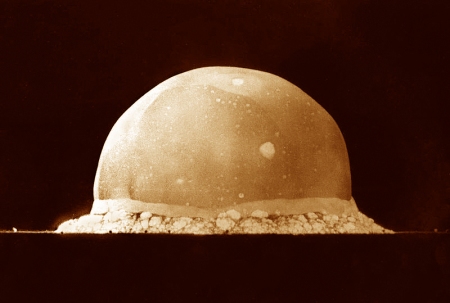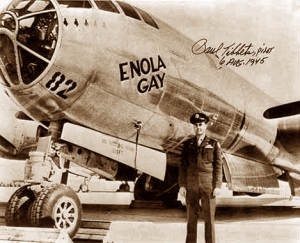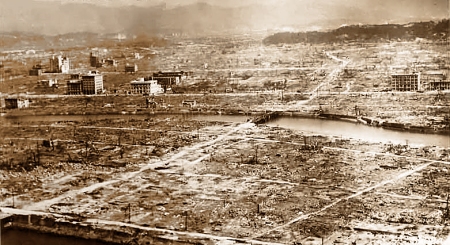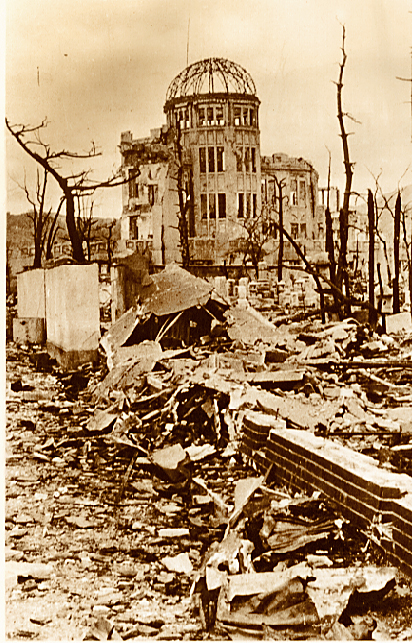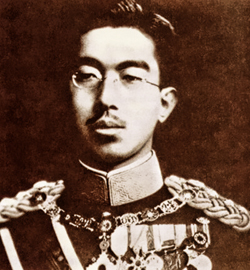2. Arguments Against Using the Atomic Bomb
I will present three primary arguments against using the atomic bomb
-
The Use of the Bomb Violated Internationally Accepted Standards of War
-
The Japanese Had Been Attempting to Surrender Long Before August 6, 1945
-
U.S. Military and Civilian Leaders Believed the Atomic Bomb was Unnecessary
1. The Use of the Bomb Violated Internationally Accepted Standards of War
The targeting of civilian non-combatants was illegal under international law. Article 25 of Laws and Customs of War on Land (Hague, II) which was ratified by the United States Senate in 1902 specifically forbids it.
The attack or bombardment of towns, villages, habitations or buildings which are not defended, is prohibited.
The United States Senate also ratified an updated version (Laws and Customs of War on Land (Hague, IV), in 1908.
Article 24 of the Draft Rules of Aerial Warfare, The Hague, was drafted in 1923 though not adopted, it was supported by the United States. It contained the following language:
(1) Aerial bombardment is legitimate only when directed at a military objective, that is to say, an object of which the destruction or injury would constitute a distinct military advantage to the belligerent.
(2) Such bombardment is legitimate only when directed exclusively at the following objectives: military forces; military works; military establishments or depots; factories constituting important and well-known centres engaged in the manufacture of arms, ammunition or distinctively military supplies; lines of communication or transportation used for military purposes.
(3) The bombardment of cities, towns, villages, dwellings or buildings not in the immediate neighborhood of the operations of land forces is prohibited. In cases where the objectives specified in paragraph 2 are so situated, that they cannot be bombarded without the indiscriminate bombardment of the civilian population, the aircraft must abstain from bombardment.
In 1938, only a year prior to the formal beginning of World War II, the League of Nations issued a unanimous resolution that directly addressed the targeting of civilians. It stated:
(1) The intentional bombing of civilian populations is illegal
(2) Objectives aimed at from the air must be legitimate military objectives and must be identifiable;
(3) Any attack on legitimate military objectives must be carried out in such a way that civilian populations in the neighbourhood are not bombed through negligence;
President Roosevelt himself drafted a letter on September 1, 1939, the day war formally began in Europe, admonishing all combatants to refrain from bombing civilian populations.
The ruthless bombing from the air of civilians in unfortified centers of population during the course of the hostilities which have raged in various quarters of the earth during the past few years, which has resulted in the maiming and in the death of thousands of defenseless men, women, and children, has sickened the hearts of every civilized man and woman, and has profoundly shocked the conscience of humanity.
If resort is had to this form of inhuman barbarism during the period of the tragic conflagration with which the world is now confronted, hundreds of thousands of innocent human beings who have no responsibility for, and who are not even remotely participating in, the hostilities which have now broken out, will lose their lives. I am therefore addressing this urgent appeal to every government which may be engaged in hostilities publicly to affirm its determination that its armed forces shall in no event, and under no circumstances, undertake the bombardment from the air of civilian populations or of unfortified cities, upon the understanding that these same rules of warfare will be scrupulously observed by all of their opponents. I request an immediate reply.
While it is clear through examination of internationally accepted warfare rules, that the bombing of Hiroshima and Nagasaki was of questionable legality, in the interest of fairness it must be pointed out that the United States was not the only nation to target a civilian population.
Beginning in December 1939, Imperial Japanese troops murdered an estimated 12,000 Chinese civilians in what has become known as the Nanking Massacre. By war’s end Imperial Japan would be responsible for the killing of around six million civilians in the territories they occupied.
Nazi Germany bombed London relentlessly between September 1940 and May 1941, including a 57 day stretch where bombings occurred nightly. An estimated 43,000 civilians perished in the Blitzkreig. Later in 1944, German rockets killed almost 9,000 civilians. In all German bombing campaigns against Poland, the USSR, Great Britain, and Yugoslavia was responsible for 600,000 civilian deaths.
Hamburg, Dresden, and Tokyo were firebombed by allied forces. The bombing of Hamburg caused caused over 50,000 deaths, mostly civilian, and left over one million German citizens homeless. The well known bombing of Dresden killed anywhere between 25,000 and 35,000 civilians.
The firebombing of Tokyo, in March 0f 1945, resulted in the complete destruction of 16 square miles worth of the city and over 100,000 killed, more than the immediate death tolls from either Hiroshima or Nagasaki. Napalm was the incendiary agent used for the bombing. By the end of the war some 50% of Tokyo had been destroyed. Some historians believe the fugure of 100,000 might be drastically low. Both sides had something to gain by under-reporting the death toll. It was that bombing raid that caused Emperor Hirohito to become personally involved in the peace process.
2. The Japanese Had Been Attempting to Surrender Long Before August 6, 1945
By 1945, Imperial Japanese forces had suffered a nearly two year long streak of defeats. Having already lost in the Marianas and the Phillipines, the first half of 1945 would see the Japanese lose battles for Iwo Jima and Okinawa. The Imperial Japanese Navy was no longer an effective fighting force having reduced numbers of ships, and no way to fuel them due to an effective Allied Naval blockade. Strategic bombing of Japanese industry had crippled her ability to fight any sort of effective war. Realization began to set in the defeat was inevitable.
By the end of January 1945, some elements in the Japanese government that were close to Emperor Hirohito began to seek out surrender term which would preserve the status of the Emperor. General MacArthur assembled a 40 page dossier and gave it to President Roosevelt on February 2, 1945, two days during leaving for Yalta. President Roosevelt reportedly dismissed the dossier out of hand since the Allied policy was “Unconditional Surrender”. It must also be pointed out that while some Japanese officials favored an early end to the war through a negotiated surrender, that was not the position of all Japanese wartime officials.
In February of 1945 Emperor Hirohito was advised by Prince Fumimaro Konoe that the imperial house might be in more danger from internal threats than allied defeats. The Emperor at that point wanted the war to continue, hoping to win a small military advance, making the chances for a conditional surrender better. That same month Japan’s treaty division postulated how the allies might treat a defeated Japan. Since the status of the Emperor was in question, the terms were unacceptable.
On April 5, 1945, the Soviet Union informed Japan that it did not intend to renew the Neutrality Pact signed in 1941. Significant concessions had been made to the Soviets at Yalta whereupon they agreed to enter the Pacific War three months after the defeat of Germany.
In May 1945 the Japanese Big Six began high level talks where the possibilty of ending the war was seriously discussed for the first time. The Big Six consisted of:
Prime Minister: Admiral Kantarō Suzuki
Minister of Foreign Affairs: Shigenori Tōgō
Minister of the Army: General Korechika Anami
Minister of the Navy: Admiral Mitsumasa Yonai
Chief of the Army General Staff: General Yoshijirō Umezu
Chief of the Navy General Staff: Admiral Koshirō Oikawa (later replaced by Admiral Soemu Toyoda)
As a result of these meetings Tōgō was authorized to approach to Moscow in order to convince the Soviets to maintain their neutrality. He carried this message:
It should be clearly made known to Russia that she owes her victory over Germany to Japan, since we remained neutral, and that it would be to the advantage of the Soviets to help Japan maintain her international position, since they have the United States as an enemy in the future.
In June 1945 Prince Higashikuni Naruhiko advised the Emperor of the dire situation that Japan found herself in. The Emperor’s hope of achieving a final military victory faded. Hirohito was known to have said:
I was told that the iron from bomb fragments dropped by the enemy was being used to make shovels. This confirmed my opinion that we were no longer in a position to continue the war.
He also said in that month:
I desire that concrete plans to end the war, unhampered by existing policy, be speedily studied and that efforts made to implement them.
An effort was made to enlist the Soviet Union to bring about a surrender. The Japanese hope was that the Soviet Union might use her influence on the Western Allies in securing a peace. In an exchange between the Japanese Ambassador to the Soviet Union, Naotake Satō, and Tōgō it was made clear that any surrender agreed upon by Japan would necessarily include the preservation of the Imperial House.
The United States had long ago broken the Japanese code, so any communication between Japanese officials and any thrid party was known to the United States nearly as quickly as it was to the intended recipient.
On July 2, 1945, United States Secretary of War Henry Stimson advised President Harry S Truman that allowing for the retention of the Emperor might make peace more likely.
I personally think that if in saying this we should add that we do not exclude a constitutional monarchy under her present dynasty, it would substantially add to the chances of acceptance.
Stimson’s advice was ignored and the surrender demand known as the Postdam Declaration (July 26, 1945) did not include language which described what the status of the Imperial Throne would be. Instead the declaration called for an unconditional surrender.
The Japanese surrender which came a few weeks later was an acceptance of the Potsdam Declaration. In the final analysis, Hirohito remained as Emperor of Japan, a position he enjoyed until his death in 1989.
It is befuddling to imagine that the Allies desired to prolong a war that a clearly defeated Japan was seeking to end. The retention of the Emperor, which was their one demand, was ultimately met. United States officials, including President Truman knew that the war could come to a swift conclusion if the Allies had only made that single concession.
But rather than bring the war to a hasty conclusion earlier in 1945, the war continued. A defeated and desperate Japan suffered the indignity of unnecessary nuclear destruction. While Hiroshima and Nagasaki did contain some legitimate military targets, the nature of the bomb made the destruction of those particular targets and only those targets without civilian casulaties an impossibilty. And Japan was left with a lasting legacy of the hibakusha, the atomic bomb survivors, many who would die shortly of radiation sickness, and many who still linger to this day having suffered the effects of the bomb. There is evidence to suggest that some of them have been discriminated against by their own people and many do not want their status as hibakusha known.
3. U.S. Military and Civilian Leaders Believed the Atomic Bomb was Unnecessary
Rear Admiral Ellis M. Zacarias:
I submit that it was the wrong decision. It was wrong on strategic grounds. And it was wrong on humanitarian grounds. I contend that the A-bombing of Japan is now known to have been a mistake and that we should admit it if we are to regain our traditional position as a leader among humanitarian nations.
Under Secretary of the Navy Ralph Bard:
Ever since I have been in touch with this program I have had a feeling that before the bomb is actually used against Japan that Japan should have some preliminary warning for say two or three days in advance of use. The position of the United States as a great humanitarian nation and the fair play attitude of our people generally is responsible in the main for this feeling.
Leo Szilard: Atomic bombs are primarily a means for the ruthless annihilation of cities. Once they were introduced as an instrument of war it would be difficult to resist for long the temptation of putting them to such use. The last few years show a marked tendency toward increasing ruthlessness. At present our Air Forces, striking at the Japanese cities, are using the same methods of warfare which were condemned by American public opinion only a few years ago when applied by the Germans to the cities of England. Our use of atomic bombs in this war would carry the world a long way further on this path of ruthlessness.
Dwight D. Eisenhower: Secretary of War Stimson, visiting my headquarters in Germany, informed me that our government was preparing to drop an atomic bomb on Japan. I was one of those who felt that there were a number of cogent reasons to question the wisdom of such an act. …the Secretary, upon giving me the news of the successful bomb test in New Mexico, and of the plan for using it, asked for my reaction, apparently expecting a vigorous assent. “During his recitation of the relevant facts, I had been conscious of a feeling of depression and so I voiced to him my grave misgivings, first on the basis of my belief that Japan was already defeated and that dropping the bomb was completely unnecessary, and secondly because I thought that our country should avoid shocking world opinion by the use of a weapon whose employment was, I thought, no longer mandatory as a measure to save American lives. It was my belief that Japan was, at that very moment, seeking some way to surrender with a minimum loss of ‘face’. The Secretary was deeply perturbed by my attitude…”
Admiral William D. Leahy: “It is my opinion that the use of this barbarous weapon at Hiroshima and Nagasaki was of no material assistance in our war against Japan. The Japanese were already defeated and ready to surrender because of the effective sea blockade and the successful bombing with conventional weapons. “The lethal possibilities of atomic warfare in the future are frightening. My own feeling was that in being the first to use it, we had adopted an ethical standard common to the barbarians of the Dark Ages. I was not taught to make war in that fashion, and wars cannot be won by destroying women and children.”
Herbert Hoover: “The use of the atomic bomb, with its indiscriminate killing of women and children, revolts my soul.” ….”the Japanese were prepared to negotiate all the way from February 1945…up to and before the time the atomic bombs were dropped; …if such leads had been followed up, there would have been no occasion to drop the [atomic] bombs.”
General Douglas McArthur: Norman Cousins, a consultant to General MacArthur wrote of the general.
“MacArthur’s views about the decision to drop the atomic bomb on Hiroshima and Nagasaki were starkly different from what the general public supposed.” He continues, “When I asked General MacArthur about the decision to drop the bomb, I was surprised to learn he had not even been consulted. What, I asked, would his advice have been? He replied that he saw no military justification for the dropping of the bomb. The war might have ended weeks earlier, he said, if the United States had agreed, as it later did anyway, to the retention of the institution of the emperor.”
Federal Council of Churches: (1946)
As American Christians, we are deeply penitent for the irresponsible use already made of the atomic bomb. We are agreed that, whatever be one’s judgment of the war in principle, the surprise bombings of Hiroshima and Nagasaki are morally indefensible.
Fleet Admiral Chester W. Nimitz:
The Japanese had, in fact, already sued for peace. The atomic bomb played no decisive part, from a purely military point of view, in the defeat of Japan.
If the utter destruction of Hiroshima and Nagasaki had been militarily necessary, it could have been accomplished by firebombing in a similar fashion that was employed against Tokyo and other Japanese cities. There was no legitimate military reason to visit Truman’s
rain of ruin upon those two cities.
